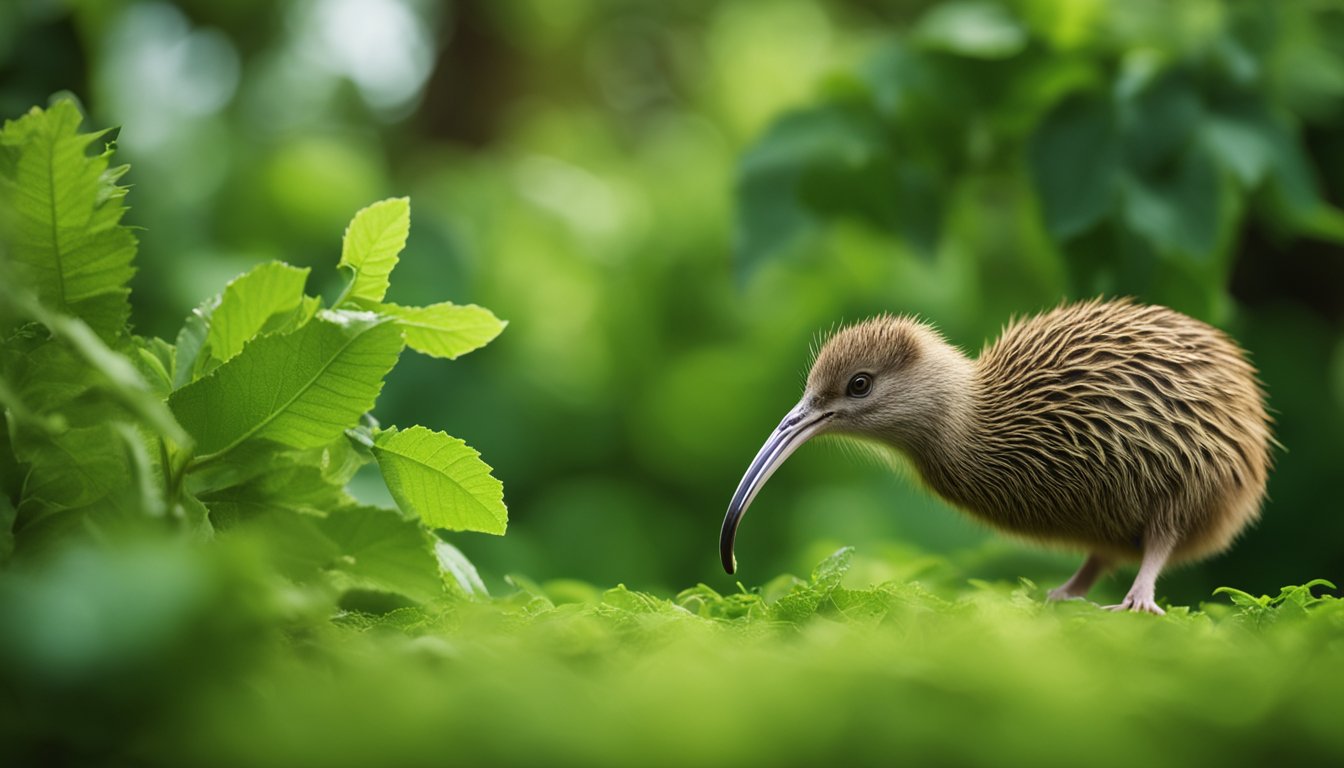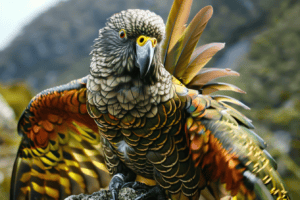Hey kids! Did you know that deep in the forests of New Zealand, there’s a curious little bird that’s like no other?
That’s right, we’re talking about the kiwi bird, New Zealand’s national treasure!
These fuzzy birds are full of surprises and we can’t wait to share some fun facts about them with you.

Kiwi birds are not just rare; they’re super interesting too.
Imagine a bird that prefers to sniff around in the darkness of night instead of flying around in the daylight.
Kiwi birds are totally okay with staying grounded because they can’t fly, which makes them pretty unique in the bird world.
Now, let’s wander into the world of kiwi birds and find out what makes them so special.
Kiwi Bird Basics

Hey there, friends! Today we’re going to share some cool facts about one of the most interesting birds from New Zealand—the kiwi.
These little birds are super special, and by learning about them, you’ll see just how amazing they are. Let’s get started!
What Is a Kiwi Bird?
A kiwi is a small, quirky bird that lives in New Zealand.
They’re part of a group of birds called ratites, which includes some of the biggest birds like ostriches and emus.
But kiwis are different because they’re pretty tiny compared to their big cousins.
Physical Features
Kiwi birds might remind you of a fruit, but they’re far from it.
They have brown, fluffy feathers that look like fur, a long beak with nostrils at the end, and they’re about the size of a chicken.
Unlike other birds, they don’t really have wings or a tail, making them pretty unique!
Unique Behaviors
Imagine having a sleepover in a secret hideout every night. Well, kiwis do that! They create burrows to chill out in during the day.
Kiwis are shy night owls, or nocturnal, meaning they love doing all their activities when it’s dark outside.
Kiwi Habitat
These feathery friends love hanging out in forests and forested areas of New Zealand, like Stewart Island and Kapiti Island.
They’re super good at finding hideouts on the forest floor where they can stay cozy and safe.
Diet and Feeding
Kiwi birds have a taste for the small things. They love munching on worms, insects, berries, and seeds.
They use their long beaks to poke around the earth, searching for tasty small invertebrates to eat.
Sense and Adaptations
Although kiwi birds don’t see so well, they have an amazing sense of smell.
They can sniff out dinner like no other bird because their nostrils are at the tip of their beak! This unique feature helps them thrive as nocturnal critters.
Kiwis and Other Animals
Though kiwis prefer to live solo or sometimes with a mate, they do have to watch out for trouble.
Animals like dogs, cats, stoats, and ferrets are predators to the kiwi, which means they need to be clever to stay out of harm’s way.
Protection and Conservation
Kiwi birds are super important to us and New Zealand—they’re even considered a national symbol!
Unfortunately, some kiwi species like the little spotted kiwi and rowi are really rare.
That’s why there’s a lot of work going into their conservation to make sure they stick around for years to come.
Interesting Facts and Mysteries

Hey, buddies! We’re about to explore some super cool things about our feathery friends, the kiwi birds.
From record-breaking facts to their unusual family tree, let’s dive in!
Kiwi Records and Extremes
The kiwi bird holds some big titles despite its size!
Did you know kiwi lay the largest eggs in relation to their body size of any bird in the world?
That’s like us carrying around a backpack as big as we are!
These birds are nocturnal creatures, which means they’re up and active when we’re usually sleeping.
Kiwi Bird Relatives
Kiwi birds are part of the ratite family, which includes some pretty big names like ostriches, emus, and the extinct moa and elephant birds.
Just imagine—a feathered cousin that’s as tall as a basketball hoop!
Kiwi in Culture and Society
In New Zealand, kiwi birds aren’t just birds—they’re a national symbol!
You’ll spot them in Maori art and they even have names like ‘tokoeka’ and ‘rowi’.
To the people of New Zealand, kiwi are super special.
Surprising Kiwi Discoveries
Scientists keep finding out awesome things about kiwi.
For example, kiwi have whiskers like a cat and their nostrils are at the end of their beak.
That’s like having your nose on your finger!
Conservation Efforts and Challenges
Saving kiwi bird means facing some tough challenges, but lots of people are working hard to help them.
New Zealand has over 20 kiwi sanctuaries and there are big plans to grow their numbers.
Because kiwis are flightless, they need our help to keep safe from dangers they can’t just fly away from.
Frequently Asked Questions

Kiwi birds are full of surprises! We’ve gathered some great questions to help us discover what makes these birds so special.
Why are kiwi birds considered unique creatures?
Kiwi birds stand out because they have feathers that look more like hair and they can’t fly like most birds.
They are one-of-a-kind, mainly found in New Zealand.
What yummy things do kiwi birds like to eat?
These night-loving birds really enjoy snacking on invertebrates, like worms and insects.
They use their excellent sense of smell to find food underground.
How many different types of kiwi birds live in New Zealand?
There are five different types of kiwi birds living in New Zealand – each one special in its own way.
Can you tell me some cool facts about the kiwi bird’s super big egg?
Of course! Kiwi bird eggs are huge considering their body size.
In fact, it’s one of the largest egg-to-body ratios in the bird world.
Just how big is a kiwi bird, and is it as large as the fruit?
Kiwi birds are not as big as you might think; they’re only about the size of a domestic chicken, which is way bigger than the kiwi fruit we eat.
What makes kiwi birds different from other birds that we see?
Kiwi birds are flightless and they have a highly developed sense of smell, which is quite rare for a bird.
Their nostrils are at the end of their long beak, which helps them sniff out food.










Add Comment